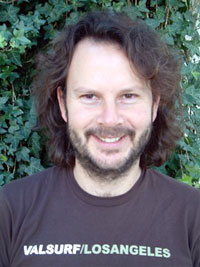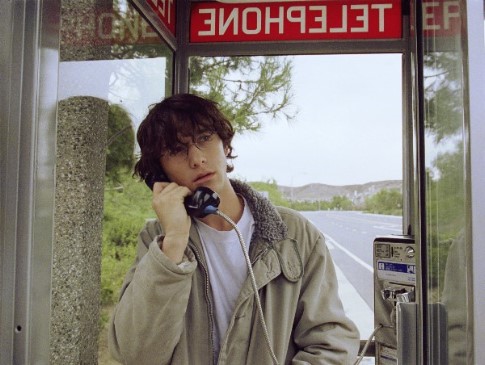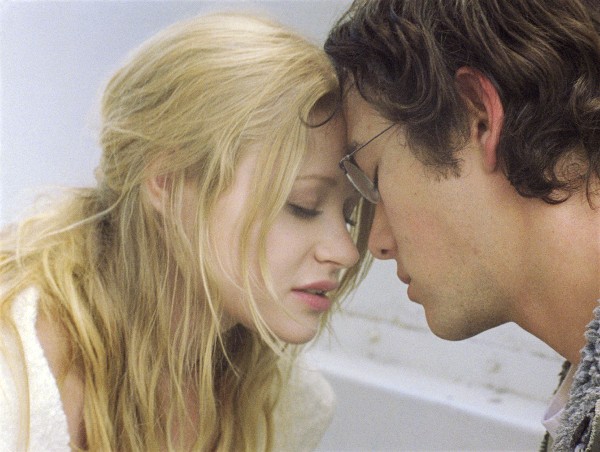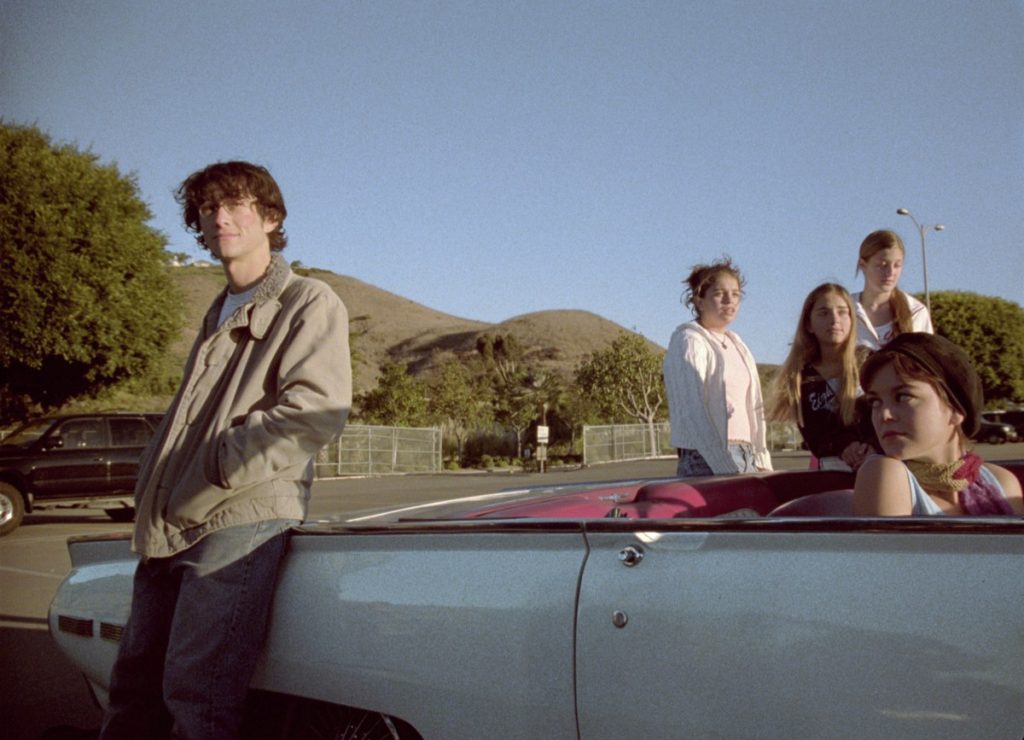As SAGindie celebrates our 20th Anniversary, we’ve opened our archives and unearthed some long-lost features and interviews from years past we thought were worth sharing again. Below is a re-post of one of our archived interviews.
[Originally published in SAGindie Spotlight, March 2006]
HIGH SCHOOL NOIR
An interview with Brick producer Ram Bergman
What does it take these days to make a film that gets a theatrical release? Is it “Name Actors?” Is it an exotic setting with multi-million dollar production design? Sure all of that helps, but it doesn’t guarantee anything. The most important thing for a small film is to offer what the big boys can’t, that is, something that is original and unique. At the 2005 Sundance Film Festival, one film really captured the imagination of the audience and caught the attention of Focus Features. That film was BRICK, a highly stylized noir film set in, of all places, a high school. Joseph Gordon-Levitt is the reluctant hero trying to unravel a mystery that could be fatal. With a great ensemble of young talent including Lost’s Emilie de Ravin, Everwood’s Nora Zehetner, and Lukas Haas, this little indie packs a punch.

SAGINDIE: How did you become a producer?
RAM BERGMAN: I grew up loving movies, but I never thought I would be making them. I was more into playing soccer or surfing. One day I decided that I needed to make movies, since that is what I loved so much. I left Israel and moved to America, because that’s where you make movies. I didn’t go to film school or anything like that. I started making movies the hard way and I keep struggling day by day. But I’m not complaining, I do what I love.
How did this project come to you?
RB: Rian Johnson, the writer/director, wrote the script eight years ago. He had been shopping it around for seven years and he couldn’t get it made. People were afraid of the script and wondered if he could really pull it off because of the dialogue and the stylistic elements. Someone sent me the script and I thought it was the most original script I had read in a while. I set up a meeting with Rian and I realized right away that he knew what he wanted, which is a pretty rare thing. I told him that the way he’d been trying to make the movie was wrong, it was too expensive. If he kept trying to get a million or a million and a half it would take years. I told him that we have to find a way to make this movie really cheaply, for like a few hundred thousand dollars. I told him that if he did it that way, it would be the movie he wanted to make and that he would be in control. If it all worked out, he will get all the benefits. He went to family and friends and got together a few hundred thousand dollars and we did it.
Where did you shoot the film?
RB: We shot on location in San Clemente, California, which was where Rian grew up and went to school.

How did you get recognizable talent attached?
RB: Rian looked for months to find the right actors. A lot of actors wanted to be in this movie because of all the great roles. But to find talent that Rian felt could actually pull it off, who could deal with the language of the movie, that was a struggle. We weren’t really looking for “names.” It’s not that hard to get the young “name” actors. We saw quite a few, but we didn’t feel that they “got it.” Finally, we read Joseph Gordon-Levitt and right away it was obvious that he was the guy. Unfortunately, he was not available for a while because he was making Mysterious Skin. We had to wait four months for him to finish that project, but it was okay because we needed him.
Did you use a casting agent?
RB: We went through agents, we went through casting directors, the usual process. I have made plenty of what you might call “no budget” movies… films with budgets under $500,000. All that matters is that you have a good script, and a talented director. I truly believe if you have these, you have a better shot of getting good talent. It’s really about finding material that is different. It’s about having a filmmaker who you think is talented and can be in the room with a cast and convince them to do the movie. These people are looking for a great part in a great script, I don’t think it has anything to do with the budget. When you and your team are able to pull off a movie for whatever you have, the challenge is to put the money on the screen because clearly you can’t pay people too much.
How many days did you have to shoot the film and how did you plan it out?
RB: We shot it on a twenty-day schedule. In the beginning we had $300,000, and then it grew to $350,000. We wanted to shoot on film, and Rian insisted that we shoot in San Clemente, so we had to put up the actors in hotels and pay them per diem and I was like, “How the hell are we going to do this?” The thing that helped us more than anything was that our main location was the high school. We got a really good deal from the high school, and then we were able to find some really good deals on locations. Rian knew where he wanted to film and that helped a lot. And the crew, because of Rian, did whatever he wanted. Everyone could feel that we were doing something different and original, and that Rian was nice - not some egomaniac. If you do it like that, then people will follow you, and in our case they did. We worked deals with vendors for cheap or nothing.
How did you post the film?
RB: Rian edited the film himself. We did the same thing with the sound, and the lab that we did during production. I went to people who I had a relationship with, people who I had done a bunch of films with and told them that we needed help on the movie. It’s something different and we don’t have the money to complete it. Sometimes when you don’t have the money it’s actually easier.
How did you achieve the visual look of the film?
RB: Because I’ve been around for a while, I know the things you need to deliver a picture. It doesn’t matter if you make a film for $400,000 or for $5 million, you need to deliver certain things to make the movie sellable and deliverable. There has to be a certain level of quality, the acting needs to be good, it needs to look good and by that I mean up to the standards people are used to. The sound has to be deliverable. The distributor isn’t going to pay you if you can’t deliver. You need an answer print, an interpositive, a video master, the M&E’s. You have to think of all this before you start filming. You need to know what buyers want internationally too.
When do you start planning?
RB: I think it’s important to know from the beginning, before you make the movie, what you want to end up with. How you are going to sell it and who is the movie for. Sometimes you succeed and sometimes you don’t but you need to have some kind of goal. How are you positioning the movie? When are you going to shoot? Is it going to be in Sundance; what happens if you don’t get in? How are you going to introduce the film to the buyers, domestically and internationally? Some people try to make an independent film on a low budget that is almost like a mainstream movie; even with some big name actors - it’s a recipe for disaster. Your film will most likely fall between the cracks. The studio won’t release it because they didn’t finance it, even if it’s a decent looking movie, it will probably go straight to video. It’s really hard, so you have to think it out ahead of time. It’s not brain surgery.
Have you had any problems with violent high school content post-Columbine?
RB: I don’t think it is such an issue now as it was a few years ago. I think again, a lot of it depends on the script and filmmaker. I guess if you were going through a studio, they would probably tell you no. It’s not a violent action movie. To me it’s like Miller’s Crossing and Chinatown, that kind of art film. Rian created his own world, it’s not like a realistic movie, it’s really stylized.
Did you have control over how the film was presented by the studio?
RB: Focus Pictures is a great company. They got very involved in everything, from the marketing, to the poster, to the trailer. It’s really important for them to work with the filmmaker. They do a great job with it. We don’t have control, but if there were things we didn’t like they would listen to us and work with us. I think they really got the movie and also knew how to sell it. They are taking it out theatrically, but I think they recognized that this film will have a long life on video. It’s like a Donnie Darko, it’s that kind of a movie.

Did you have much time to rehearse with the actors?
RB: It was really Rian and Joseph at first. They became more like partners collaborating on the role. They would rehearse and just hang out together and talk about the movie. Later on they would spend nights at Rian’s small apartment; Rian would cook and then rehearse after dinner.
Since this was a functioning school, how did you work around the students?
RB: We shot it in November 2003. We shot on some weekend days, and after the classes let out. Some days we shot during class. We even had some kids from the high school that worked as PAs on the movie. Somebody from the school shot our behind-the-scenes footage.
Was there a lot of prep for the film?
RB: Since he had so many years to prepare, Rian really knew his film. He and his best friend and cinematographer Steve Yedlin had storyboarded the entire movie long before we started preproduction. Some of the shots are identical to the shots he had designed eight years ago. You would be amazed at how close they are. He really knew what he wanted for this movie. He had a vision and he knew how to go about executing it and he was really comfortable on the set even though it was his first movie. He was facing the typical problems you have on a low budget shoot, one day you lose a location, or actors don’t show up, things that could shut you down, but nothing threw him.
Where did the music come from?
RB: The score was written by Rian’s cousin who lives in London. He and Rian did the whole soundtrack over iChat. It was all live music, different instrumentation for every character, and they did the final mixed with his brother in New York. Rian has a big family.
What suggestions would you give for filmmakers?
RB: It’s getting easier and easier to make a movie with the whole digital revolution. But to make a good movie is a whole different story. I don’t think the amount of money determines whether the movie is good or not. Definitely start with the best script you can get. You can get money from wherever you can find it, family or friends. Whatever it takes. Then think of what you want to do with the movie, like I said before, where it’s going when it’s finished. But most the most important thing is to stick with it. For Rian it took seven years, but he ended up making the movie he wanted to make. If you stay persistent long enough you can do it.
What’s next for you?
RB: I am working on Rian’s next movie, which we will be doing with Focus. I can’t say too much about it except to say that it is very cool and original. I just finished a feature called Conversations with Other Women with another first-time director. It has Helena Bonham Carter and Aaron Eckhart and we hope that will come out in a few months.
Once again a filmmaker’s perseverance and vision pays off in the long run. Focus Features will be releasing Brick in theaters March 24th.
__
Thanks to Ram for discussing BRICK.
If you’re an independent filmmaker or know of an independent film-related topic we should write about, email blogadmin@sagindie.org for consideration.



